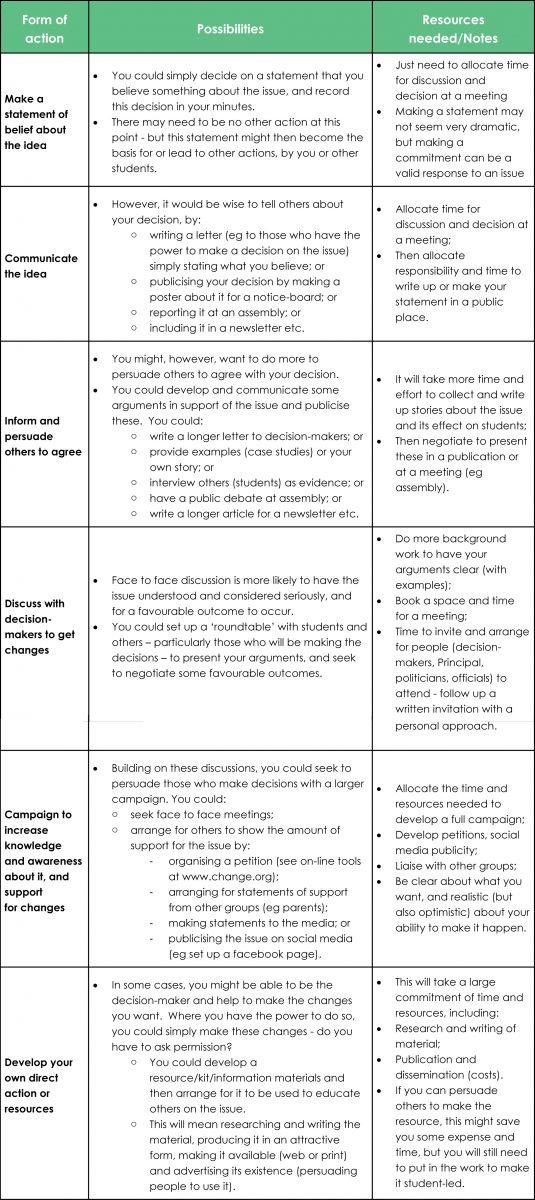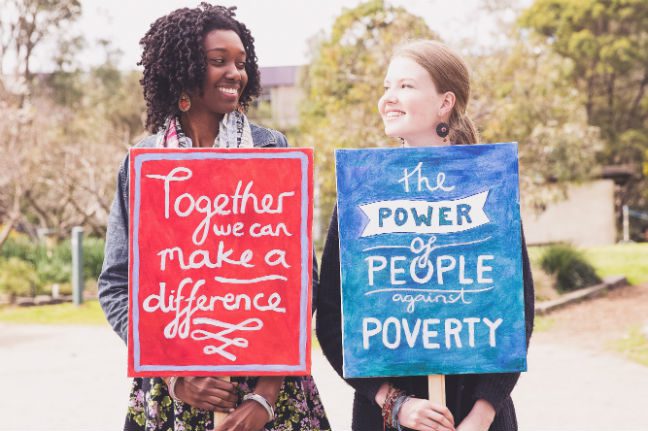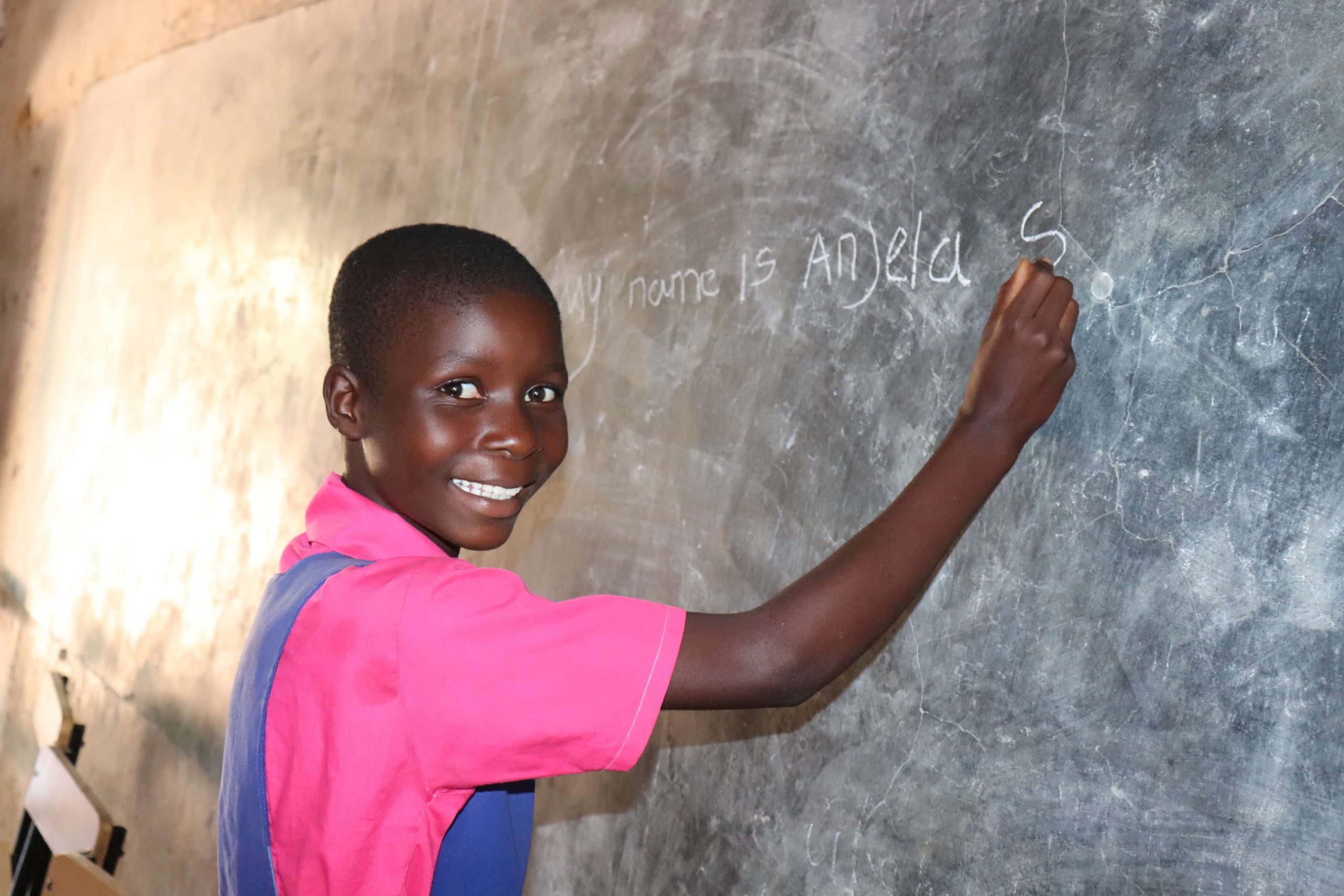Students are more connected to social justice issues than ever before. Many have the fire to ‘do something’, but working out exactly what action to take can be daunting.
You and your students are fired up about an issue — ethical fashion, global poverty, Indigenous rights and equality, the broken food system — whatever it is that’s got you going. But how do you translate that passion into action?
At Oxfam, we apply the Learn, Think, Act model of global citizenship when approaching social justice issues. Schools are normally pretty great at the first two, but sometimes deciding on the course of action can pose a challenge.
We believe in a student-led approach. Some of the best results we see are when students are authentically engaged and empowered to run the show.
So, our friends at Victorian Student Representative Council have shared their take on the different types of actions students can take, adapted from the awesome student voice magazine Connect issue #211. Let’s dive in.
Let’s assume you’ve done the ground work: You’ve defined the issue, investigated it and developed a vision of what the issue could or should be like. What next?
This will depend on what the issue is, what you want to achieve and what your resources (time, energy, funding) are. Remember, you don’t have to focus solely on making big changes (like building things or restructuring things).
There are four suggested types of action that you could take — the 4Es:
- Engineering: building things; changing structures like timetables
- Enforcement: stopping/punishing negative behaviour: public rebukes, telling off, restraining etc
- Encouragement: rewarding positive behaviour: public praise, providing funding, good examples
- Education: providing information: telling or training people, supporting others to investigate
But you still might be faced with a general or undefined decision that you should ‘do something’ about an issue; perhaps other students have asked for a student representative council to take action on it, or you have a decision that the issue is important to students. It might be a big issue or a small one; you might have lots of time to devote to it, or not much time at all.
Below is a table to sort out some possible types of actions you could do to respond to the need to ‘do something’.
These actions range from simply making a statement about the issue or idea, to developing a big campaign. Each of these options has implications around your potential resources. These implications will help you determine what is possible, as well as what is needed.

Good luck with your own action developments!
These are great examples of the myriad ways schools can make a difference. For more ideas on how you can take action, check out:
- The Oxfam Schools Program webpage. We’ve got heaps of education resources, action guides and stories to inspire and help students create actions with impact
- Oxfam’s DIY campaigning page
- Oxfam’s ‘Take Action’ page with a list of Oxfam’s current campaigns and petitions
For more information on Oxfam’s Schools Program and how your school can get involved, click below




